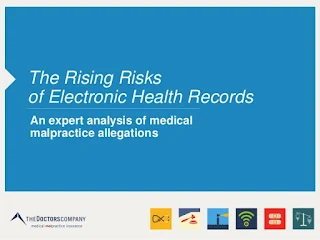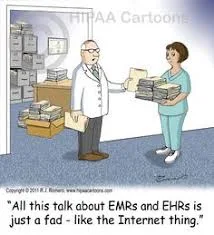Patient Directed Health Data Exchange on The Blockchain
This research is just one of a number of projects exploring blockchain-based health data management. Expect to see both commercial healthcare ventures and research organizations roll out new blockchain-based information sharing the next couple of years. For example, earlier this year a group including health insurers, a bank and IBM Corp. announced that it was building out a blockchain-based “ecosystem.” In addition, it’s likely that more organizations will pursue models that attempt to put the patient fully in charge of their health data, such as PatientDirected.io, a patient-directed health data exchange.
While the technical approach researchers took may have been successful, they admit that administrative drawbacks could make it hard to put into place in real-life conditions. “Forcing all participating parties to use a service like this will still remain a challenge,” they concede.
The researchers also acknowledge that while blockchain can incorporate data into structures that are immutable, traceablem and verifiable, it can’t protect against falsified data being introduced at the point of origin. To address this concern, trial participants would ideally see that raw forms of data or input be captured as early as possible into the blockchain. A trio of researchers with the University of California San Francisco have developed a blockchain-based model for sharing clinical trial data between institutions. Their model not only protects the data but also makes the data traceable and immutable, according to a paper they wrote describing their work.
The paper, which was published in the journal Nature, outlines how they built a proof-of-concept web portal service using data from a real completed clinical trial. It notes that at present there are many levels at which such data could be intentionally falsified or accumulate errors, and that it remains difficult to track and access data across the complex network of data partners often involved in such trials.
To see if they could address these issues, the researchers created a prototype phase II clinical trial which would register all participating parties in a portal based on a private blockchain. In this model, all parties would be required to use the portal for any and all information exchanged related to the trial.
HOW BLOCKCHAIN TECHNOLOGY WILL TRANSFORM HEALTHCARE IN 2019. Several industries have already been completely disrupted by blockchain technologies. p up. More and more, cryptocurrencies are being legalized –
THE FUTURE OF HEALTHCARE IS EHEALTH FIRST
At the beginning of 2017, a number of healthcare, blockchain and business professionals – researchers and physicians at the top of their fields – came together with an interesting idea. They knew, already, that lots of data was being collected. Patient records have been stored digitally by doctors for years, and a wealth of data, including medical research and information on patient outcomes, has already been gathered. This group of physicians realized right away that this data can be stored on distributed ledgers – on the blockchain – to keep it secure, but also accessible in such a way so as to make medical care more effective.
This group of physicians has gone one step further and has enlisted several top experts in computer science and robotics in doing so. This data, that has already been collected, and continues to be collected, could be processed using artificial intelligence algorithms, machine learning, and neural networks. A user – be it a medical professional or the patient itself – could potentially enter metrics regarding symptoms into the system to find a diagnosis, as well as the best possible solution to their problem.
Now, these medical and computing experts are ready to announce that they have begun work on a platform – eHealth First – that will allow users to do just that. EHF (www.ehfirst.io) consists of two applications. The first is a user-friendly mobile and web application that allows users to get diagnoses and recommendations that improve medical conditions and increase lifespans. The second is an open platform for medical professionals, that allows specialists to access medical research data in order to build other platforms specializing in a wide array of medical conditions and diagnoses.
Taking the eHealth First platform into consideration, as we move into 2018, it seems the blockchain will revolutionize healthcare in three ways:
Data Driven Health Care
Provide secure use of medical records which can be used for diagnosis by doctors or AI.
Medical professionals have been storing patient medical records digitally for two decades already. This data can be securely stored on a distributed ledger, all while maintaining patient privacy.With the help of advanced algorithms, this data is extremely valuable. These records show the symptoms that lead to a diagnosis, and then the treatments that worked, and the ones that didn’t. Apps are being developed that will allow symptoms, laboratory and instrumental indicators, as well as other data, to be entered as input, and for a diagnosis and treatment or prevention recommendation to be received as output.








